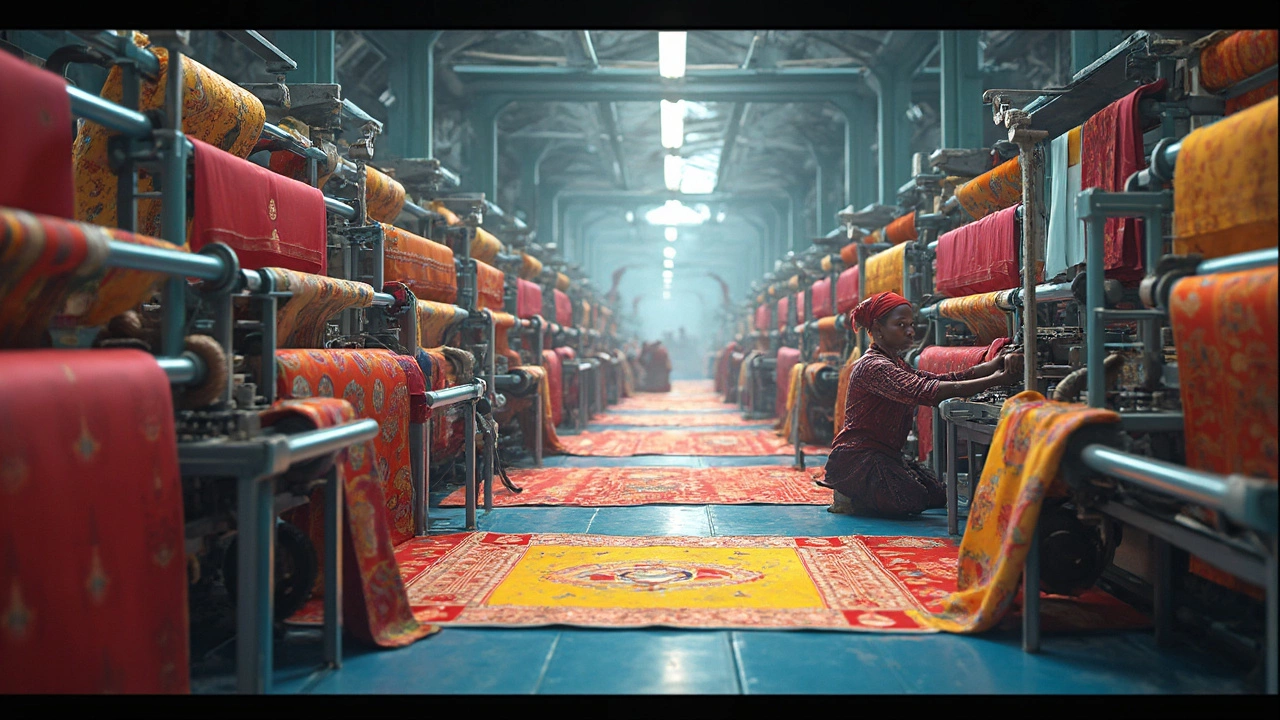- Understanding the Dynamics of Small Scale Production Processes Jan 7, 2025
- Discover India's Furniture Capital: Unveiling the Top State for Furniture Mar 12, 2025
- Top Trending Manufacturing Startup Ideas for 2025 Jan 26, 2025
- What Is an Example of a Small Scale Business in Manufacturing? Dec 9, 2025
- Indian Textile Industry Collapse: What Really Happened and What It Means for Manufacturers Apr 23, 2025
India Textile Outlook: What’s Shaping the Industry in 2025
India’s textile sector is at a crossroads. On one side you have record‑high output, on the other rising raw‑material costs and tightening environmental rules. If you’re a manufacturer, investor, or just curious about where fabrics are coming from, understanding today’s drivers will help you make smarter moves.
Key Trends Driving Growth
First, the government’s Production‑Linked Incentive (PLI) scheme has put a huge boost behind high‑value yarn and technical textiles. Companies that qualify get cash back on sales, so you’ll see a surge in modern looms, AI‑controlled dyeing, and automated cutting. This tech upgrade lifts productivity by 15‑20% on average.
Second, export demand is shifting. While traditional markets like the US and EU still buy cotton and silk, the Middle East is snapping up blended fabrics for fast‑fashion brands. Export data from 2023 shows a 12% jump in blended‑fabric shipments, and that trend is set to continue as global buyers chase cheaper, lighter materials.
Third, sustainability is no longer a buzzword. Eco‑friendly fibers such as organic cotton, linen, and recycled polyester are gaining shelf‑space in both domestic boutiques and international chains. Brands are demanding traceable supply chains, so factories that can certify water‑saving processes or low‑chemical dyes are winning new contracts.
Challenges and Opportunities
Raw‑material prices remain a pain point. Cotton prices hit a five‑year high last season because of erratic monsoons and increased global demand. Smart manufacturers are hedging by diversifying into alternative fibers like bamboo and hemp, which offer comparable strength with lower water footprints.
Labour costs are creeping up too. While India still enjoys a large, skilled workforce, rising wages mean automation is becoming a must‑have, not a nice‑to‑have. Small workshops that invest in semi‑automatic looms are seeing margins improve, as they can produce twice the output with the same staff.
Finally, infrastructure gaps – especially in logistics – can eat into profit margins. The government’s new “Textile Corridor” project aims to connect major production hubs with ports via dedicated freight lines. Once operational, you can expect shipping times to drop by 30%, making Indian fabrics even more competitive abroad.
Bottom line: the Indian textile outlook is bright, but success will belong to those who blend government incentives, tech upgrades, and sustainability into their business model. Keep an eye on PLI updates, watch cotton price trends, and explore alternative fibers to stay ahead of the curve.
Textile Industry Outlook in India for 2024: Key Trends and Insights
- Aarav Sekhar
- Feb 12, 2025
The textile industry in India is gearing up for significant changes in 2024, driven by technological advances and sustainable practices. With both challenges and opportunities on the horizon, manufacturers are investing in innovation to boost productivity. While global demand fluctuations pose uncertainty, India's strong domestic market offers a buffer. Government initiatives continue to play a vital role in supporting industry growth.
